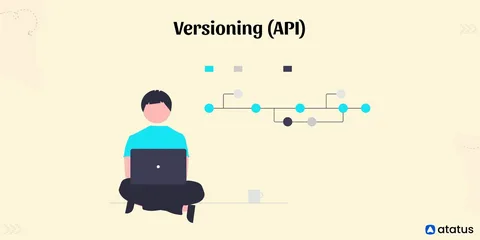Think of APIs as bridges. They connect two bustling cities—applications and users—making it possible for people and goods to travel back and forth seamlessly. But as cities expand and traffic increases, bridges must be upgraded, repaired, or even rebuilt. The trick is to do this without cutting off travellers or causing chaos.
That’s where API versioning comes in. It’s the careful process of updating these bridges while keeping them open, ensuring old travellers still reach their destinations while new ones benefit from stronger, faster designs.
Why API Versioning Matters
Every piece of software evolves. New features are added, performance improves, and security requirements change. If APIs stayed static, they would quickly become outdated or unsafe. But changing them without a plan risks breaking integrations that businesses and customers depend on.
Versioning provides a structured approach to introducing improvements while maintaining backwards compatibility. It gives developers the freedom to innovate while providing users with stability and trust.
This balance—innovation without disruption—is often highlighted in full-stack developer classes, where students learn that versioning is as much about people and processes as it is about code.
The Main Strategies for Versioning
There’s no one-size-fits-all approach to API versioning. Different strategies are suited to other contexts, and selecting the right one depends on the system and its users.
- URI Versioning: Adding a version number directly into the URL, such as /v1/orders or /v2/orders. It’s clear and widely adopted, but it can clutter endpoints as versions grow.
- Query Parameter Versioning: Specifying the version with a query parameter (e.g., /orders?version=2). This keeps the URI clean but requires clients to handle the parameter explicitly.
- Header Versioning: Including the version in request headers. This keeps URLs tidy and allows for flexibility, but can be less transparent for debugging purposes.
- Content Negotiation: Using media types (MIME) to manage versions. This advanced method offers fine-grained control, but it also adds complexity.
Each of these is a different tool in the toolkit, and choosing wisely depends on how visible you want changes to be and how easily clients can adapt.
Planning for Backwards Compatibility
A strong versioning strategy doesn’t just focus on adding new features—it protects existing users. Backwards compatibility ensures that older clients continue to function even as APIs evolve.
One effective method is deprecation policies. Clearly signalling which versions will be phased out and when gives users time to migrate without surprises. Documentation, error messages, and migration guides act as signposts, guiding users from the old bridge to the new one safely.
Without this care, versioning can become a source of frustration instead of progress.
Communication and Documentation: The Lifelines
Even the best technical strategy will fail if users don’t know what’s happening. Communication is at the heart of API versioning. Release notes, clear documentation, and change logs ensure that developers working with your API understand what’s new, what’s changing, and how to adapt.
Think of it as putting up road signs and maps when rerouting traffic. Without them, travellers get lost. With them, the journey is smooth—even exciting, because they know they’re heading to a better, faster bridge.
Training programs, including advanced full-stack developer classes, often emphasise this aspect. Writing great code is only half the job; communicating changes effectively is what ensures adoption and trust.
Conclusion
API versioning is about more than numbers—it’s about building bridges that evolve gracefully. With strategies like URI, query parameters, headers, and content negotiation, developers have flexible tools to manage change. By planning for backwards compatibility and maintaining clear communication, teams can innovate without breaking trust.
In the end, versioning is less about the code itself and more about the experience of those who rely on it. Done well, it ensures APIs remain not just functional, but reliable and future-proof—bridges that stand firm even as the cities on either side continue to grow.


